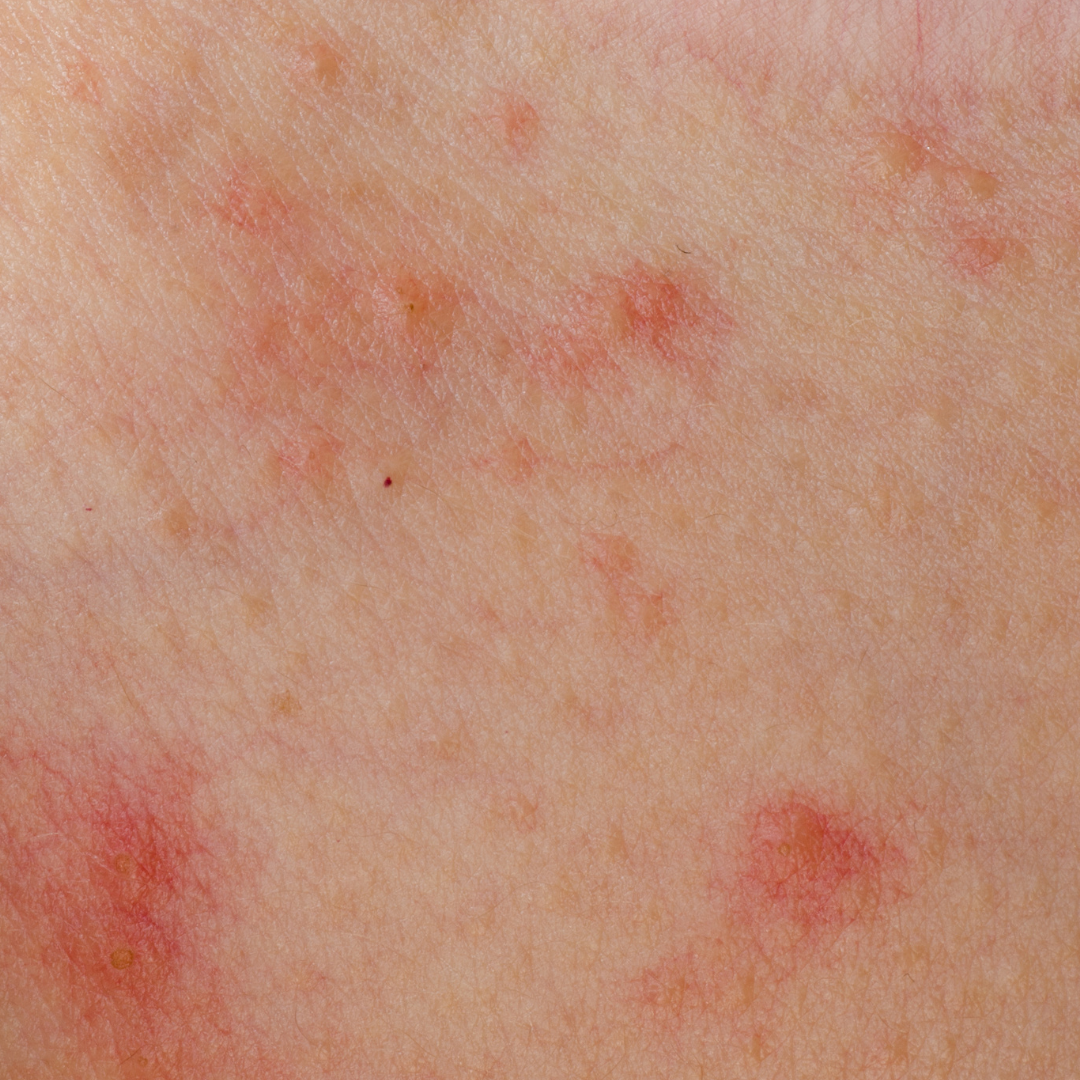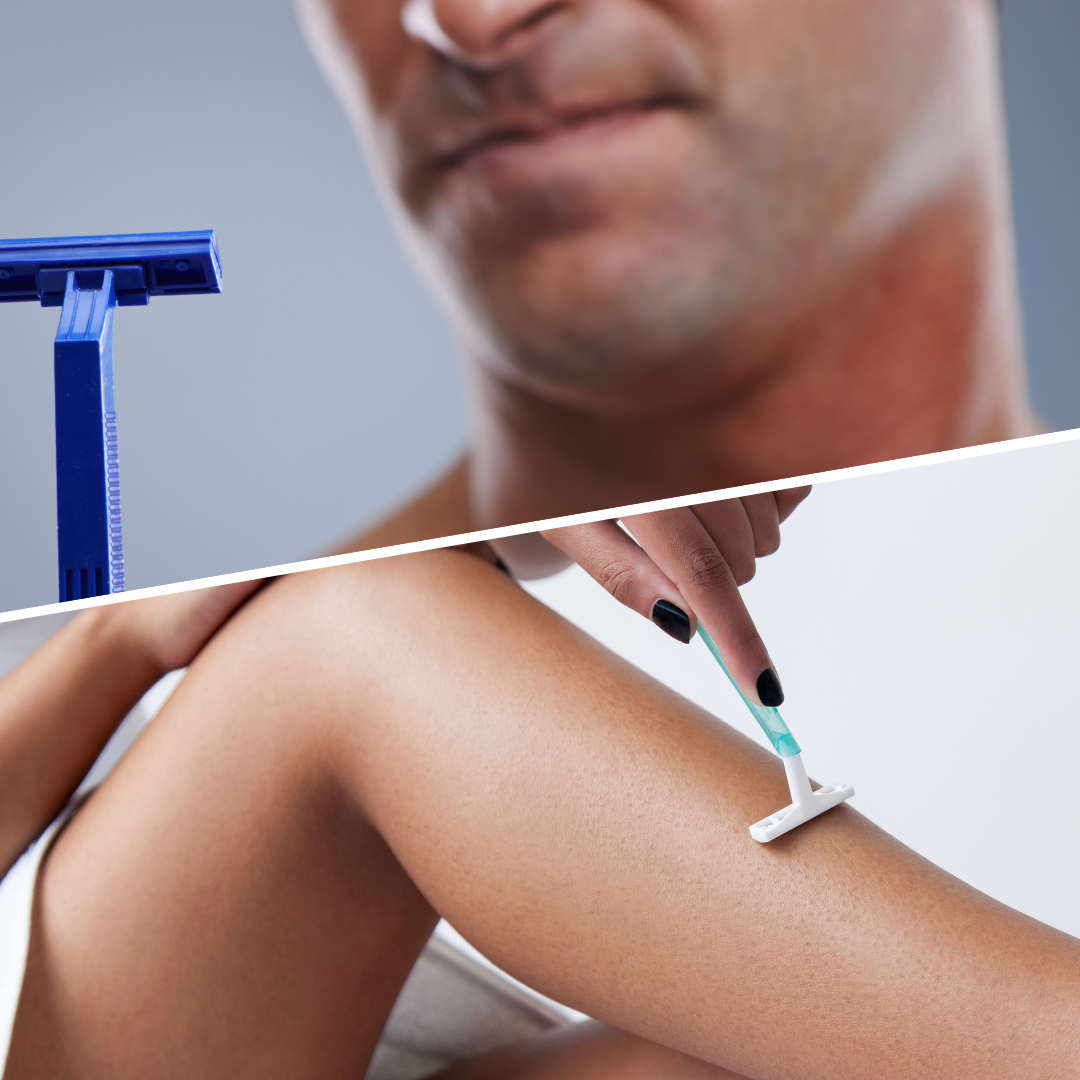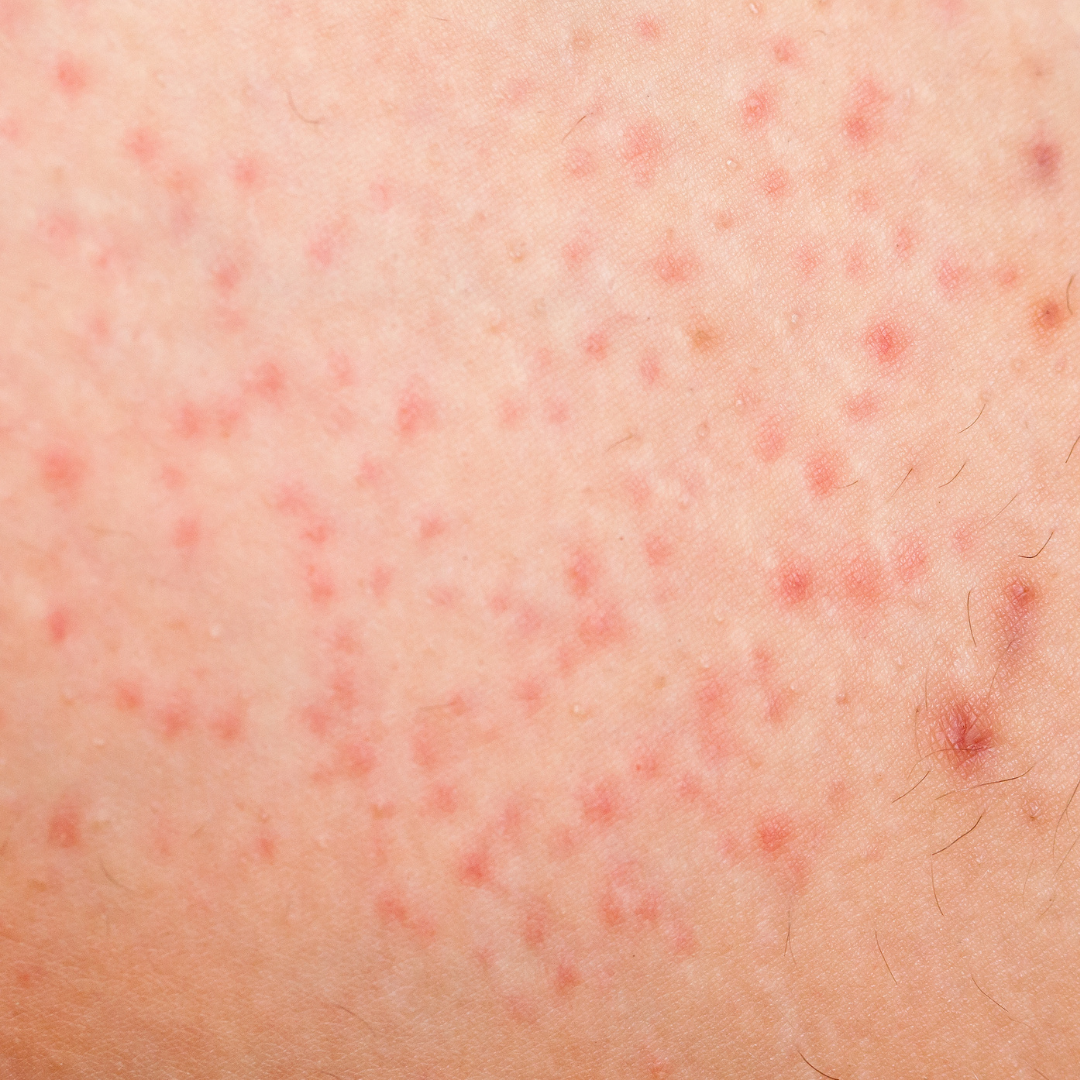Beat the Burn: 10 top Tips to Get Rid of Shaving Rash
Shaving is often a mundane and lengthy task many of us partake in regularly to achieve that smooth, clean look.
However, it often comes with an unwanted sidekick. The dreaded shaving rash.
These red, itchy, and sometimes painful bumps can put a dampener on your grooming routine. But fret not, in this blog post, we’ll explore what causes shaving rashes and how you can prevent and treat them for a smoother, rash-free shaving experience.
⏱️ Read Time: 11 Mins
Understanding Shaving Rashes
Shaving rashes can also be known as razor burns or pseudo folliculitis barbae. It can occur when the hair follicles become irritated or infected after shaving.
There are several factors that contribute to their development:
- Blade Quality: Dull blades can tug at hair and cause friction, leading to irritation and razor burn. Always use a sharp, clean blade.
- Shaving Technique: Improper shaving techniques, such as applying too much pressure or shaving against the grain, can increase the risk of rashes.
- Skin Sensitivity: If you have sensitive skin, you’re more prone to shaving rashes.


Are there different shaving techniques for men and women to prevent rashes?
Yes, there are different shaving techniques for men and women to prevent rashes, primarily due to differences in hair thickness, skin sensitivity, and the areas being shaved. Here’s how techniques may vary:
Direction of Shaving
- Men typically shave facial hair, which is thicker and coarser. To prevent rashes, it’s recommended to shave in the direction of hair growth, especially for sensitive areas like the neck and jawline. Shaving against the grain can lead to irritation and ingrown hairs.
- Women, when shaving legs, underarms, or bikini areas, can often shave against the direction of hair growth for a closer shave, but should do so with caution, especially in sensitive areas like the bikini line. If irritation occurs, shaving with the grain may be a safer option.
Exfoliation
- Women are often advised to exfoliate before shaving to remove dead skin cells and prevent ingrown hairs, particularly on the legs and bikini area.
- Men can benefit from exfoliating the face to avoid clogged pores and bumps, especially before shaving around the neck, where ingrown hairs are common.
Shaving Tools
- Men may use razors with multiple blades and pivoting heads designed for facial contours, which can reduce the chance of nicks and rashes.
- Women often use razors with moisturizing strips and larger heads that glide smoothly over legs and other body areas, which helps reduce irritation.
Shaving Products
- Men should opt for shaving gels or creams that provide a thick lather for protection, and those with sensitive skin might prefer products with soothing ingredients like aloe or chamomile.
- Women often use creams or gels with added moisturizers to help avoid dryness and irritation, particularly when shaving larger areas like the legs.
Frequency of Shaving
- Men might shave more frequently, especially facial hair, which means they need to focus on post-shave care like using aftershaves with calming ingredients to prevent rashes and redness.
- Women can often shave less frequently, depending on personal preferences, but should always moisturise well after shaving to maintain skin health and avoid rashes, especially on sensitive areas.
Post-Shave Care
- Men should use alcohol-free aftershaves or balms to soothe and moisturise the skin, reducing irritation and the risk of rashes.
- Women should apply gentle, fragrance-free lotions or oils after shaving to lock in moisture and prevent irritation, especially in areas prone to dryness, like the legs.
Preventing Shaving Rash
Pre-Shave Preparation:
Pre-shave preparation is essential for reducing shaving rashes. It softens the hair and opens the pores, making it easier for the razor to cut through the hair without tugging or pulling, which can lead to irritation.
Taking a hot shower before shaving also helps to relax the skin and prepare it for a smoother, less abrasive shaving experience.
Proper pre-shave preparation minimises the risk of ingrown hairs and razor burn. Promoting a more comfortable and effective shave while reducing the likelihood of post-shave irritation.
Is it better to shave in the shower or with dry skin to avoid rashes?
It’s better to shave in the shower or after a warm shower, as it helps prevent rashes. The warm water and steam soften both the skin and hair, opening up the pores and making hair easier to cut. This minimises the chances of irritation, razor burn, and shaving rash.
Dry shaving, on the other hand, increases the likelihood of friction and irritation, as there is no moisture to protect the skin, which can lead to cuts, redness, and rashes.
For best results, use a moisturising shaving cream or gel to further reduce friction and provide a protective barrier between the blade and the skin.
If you prefer not to shave in the shower, splashing warm water on the area and using a high-quality shaving product can still help reduce the risk of rashes.
Use Quality Products:
Using quality shaving products can significantly reduce shaving rashes because they provide a smoother and more protective surface for the razor to glide over. Minimising friction and irritation.
High-quality shaving creams and gels often contain moisturising and soothing ingredients that help keep the skin hydrated and calm during and after shaving. Reducing the risk of redness and razor burn.
These products are specially formulated to create a barrier between the razor and the skin, ensuring a comfortable and irritation-free shaving experience.
Sharp Blades:
Sharp blades are crucial in reducing shaving rashes because they cut through hair cleanly and efficiently. Minimising the need for additional passes and thus reducing friction and irritation on the skin.
Dull blades can tug at hair, leading to uneven cutting and increased chances of razor burn and redness.
Using sharp blades ensures a smoother and more comfortable shave, significantly decreasing the likelihood of shaving rashes and promoting healthier skin.
How often should I change my razor?
You should change your razor every 5-10 shaves or when you notice signs of dullness.
A dull razor can tug on the skin and hair, causing irritation, razor burn, and an increased risk of shaving rash. If you shave daily or frequently, changing the blade once a week is generally a good rule. For those who shave less often, switching blades after every 7-10 uses is usually sufficient.
Additionally, if you notice the razor causing nicks, pulling on the skin, or if it feels less smooth than usual, it’s time for a replacement.
Properly rinsing and storing your razor in a dry place between uses also helps maintain the sharpness and cleanliness of the blade, reducing the risk of bacteria buildup and shaving rash.
Proper Technique:
Using a proper shaving technique is essential in reducing shaving rash because it minimises the friction and irritation caused during the shaving process.
Shaving in the direction of hair growth, as recommended, reduces the chances of hair being pulled and twisted in the follicles, which often leads to razor burn and redness.
Additionally, proper technique ensures a smoother, more even shave, reducing the likelihood of ingrown hairs that can contribute to shaving rash.
Aftercare between shaves:
Using skincare products after shaving is beneficial for several reasons.
Lactic acid helps exfoliate the skin, preventing ingrown hairs and maintaining a smooth complexion.
Vitamin A promotes skin renewal, reducing the appearance of post-shave redness and irritation.
Vitamins C and E offer antioxidant protection, helping to soothe and heal the skin, leaving it looking healthy and refreshed.
We recommend this scientifically formulated Body Oil and Body lotion, clinically proven to prevent shaving rashes and razor burns.
Laser Hair Removal:
Laser hair removal reduces shaving rashes by providing a long-term solution to unwanted hair growth.
Unlike traditional shaving, which requires frequent sessions and can lead to ingrown hairs and razor burn, laser hair removal targets hair follicles at the root, inhibiting future hair growth.
This means fewer shaving sessions and less opportunity for skin irritation. Ultimately leading to smoother, rash-free skin in the treated areas.
Find out more about laser hair removal here.
Can certain skin types be more prone to shaving rash?
Yes, certain skin types are more prone to shaving rash, particularly sensitive, dry, or acne-prone skin. Here’s how you can manage it:
Sensitive Skin:
People with sensitive skin are more likely to experience irritation and redness after shaving.
To manage this, use a hypoallergenic shaving cream or gel and avoid products with strong fragrances or alcohol.
Opt for a single-blade razor or one designed for sensitive skin to reduce friction and irritation. Always shave in the direction of hair growth to minimise tugging.
Dry Skin:
Dry skin can become flaky and more irritated after shaving. To manage this, ensure the skin is well-hydrated before shaving. Shave in or after a warm shower to soften the skin and hair. After shaving, apply a fragrance-free moisturiser or an aftershave balm to lock in moisture and soothe the skin.
Acne-Prone Skin:
Shaving over acne can cause irritation and even spread bacteria, leading to further breakouts.
For acne-prone skin, use a gentle, antibacterial shaving gel to reduce the risk of infection and shave carefully around active breakouts.
Use a razor with fewer blades and avoid pressing too hard to prevent aggravating acne.
top 10 tips to get rid of shaving rash
If you already have a shaving rash, here are some effective steps to treat it and soothe the irritation:
1. Stop Shaving the Affected Area
Allow the irritated skin to heal by avoiding shaving until the rash has subsided. Shaving over an existing rash can worsen irritation and prolong healing.
2. Apply a Cool Compress
Gently apply a cold compress or washcloth soaked in cool water to the affected area for about 10 minutes. This helps reduce inflammation, redness, and discomfort.
3. Use Soothing Creams or Ointments
- Apply a fragrance-free moisturiser or aftershave balm containing calming ingredients like aloe vera, chamomile, or tea tree oil. These can help soothe the skin, reduce redness, and speed up healing.
- If the rash is severe, use an over-the-counter hydrocortisone cream to reduce inflammation and itching. Use it sparingly and follow the directions on the product.
4. Avoid Irritants
Stay away from fragranced products, harsh soaps, or alcohol-based aftershaves, as these can further irritate the rash. Opt for gentle, hypoallergenic products until the rash clears up.
5. Exfoliate Gently (Once the Rash Calms Down)
Once the rash has started to heal, gently exfoliate the area to remove dead skin cells and prevent ingrown hairs. Use a mild exfoliant or a soft washcloth to avoid further irritation.
6. Moisturise Regularly
Keep the affected area well-moisturised with a fragrance-free, non-comedogenic lotion. This helps prevent dryness and promotes faster healing. Choose products with ceramides or glycerin to repair the skin barrier.
7. Avoid Tight Clothing
Tight clothing, especially in areas like the underarms or bikini line, can rub against the skin and worsen the rash.
Wear loose, breathable clothing to minimise friction and allow the skin to heal faster.
8. Keep the Area Clean and Dry
Clean the area with mild soap and warm water, and pat it dry with a clean towel.
This helps prevent bacteria from getting into the irritated skin, reducing the risk of infection.
9. Consider an Anti-Inflammatory Oral Treatment
If the rash is very painful or inflamed, taking an over-the-counter anti-inflammatory like ibuprofen or aspirin can help reduce swelling and discomfort.
10. Use Antibacterial Products (for Infected Rashes)
If the rash appears infected (with pus or increased pain), apply an over-the-counter antibacterial ointment to prevent further infection.
If the infection persists, consult a doctor for a stronger topical antibiotic.


Request a Call Back.
At ProSkin Clinic & Health UK Ltd, your skin’s health are our top priority. If you’re considering one of our treatments but have questions or need guidance, we’re here to help. Request a callback, and let’s start your journey to amazing skin together.
How It Works:
- Fill out a simple form with your name, contact information, and a brief message about your skincare needs.
- Our expert team will review your enquiry and get back to you promptly.
- We’ll provide detailed information and can even set up a consultation appointment for you.

In an industry where promises are plentiful but assurances are rare, unlike any other Clinics, ProSkin Clinic & Health UK stands apart by offering an unparalleled guarantee.
This isn’t just a policy; it’s our promise to you.
It means that we are so confident in the effectiveness of our treatments and the quality of our products that we are willing to stand by them with a guarantee. From the moment you step into our clinic, you’re covered by our commitment to your satisfaction.
